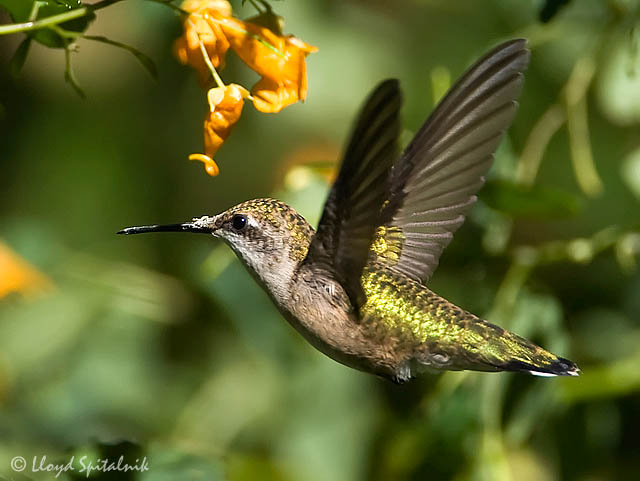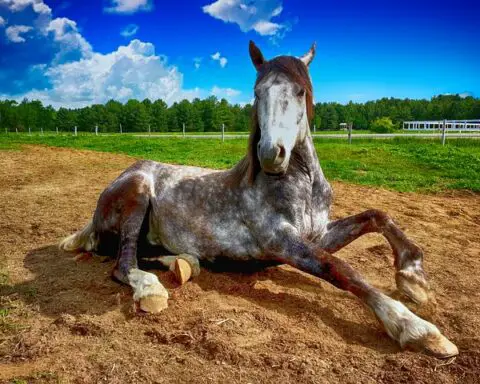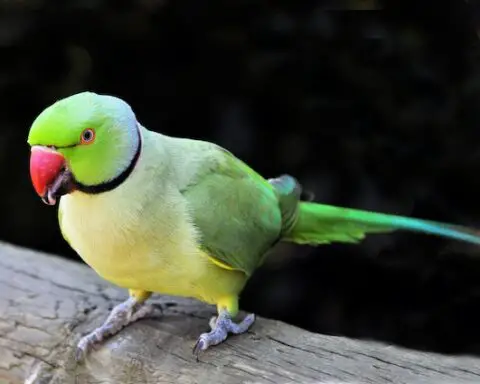Hummingbird facts for kids share some of the useful and unknown insights about this beautiful bird. Hummingbird is the small bird that belongs to the family of Trochilidae. Back in 2004, scientists have discovered hummingbird fossils that were more than 30 million years old. Giant hummingbird is the largest whereas Bee Hummingbird is the smallest of all species.
Hummingbirds are primarily insectivores and they mainly feed on flowers as their bills are so shaped. Several hummingbirds species are responsible for plants pollination thereby yielding orange and red colors in flowers. These small birds are adept enough to visualize wavelengths in the ultra-violet however, their flowers are incapable to replicate these wavelengths.
Hummingbird Facts for Kids
- The length of these birds measure about 7.5 cm to 13 cm (3 to 5 in).
- One of the strange traits of these birds is that they can stand in the air by flapping their wings. Hummingbirds flap its wings 15 – 80 times in one second.
- Bee hummingbird is considered to be the smallest of all the species.
- The flying speed of these birds is about 15 m/s (54 km/h; 34 mph).
- Hummingbirds can easily see wavelengths into the ultraviolet rays for which flowers do not reflect unlike few insect-pollinated flowers.
- Hummingbirds are very fond of taking nectar from insect-pollinated flowers since these flowers have large quantity of sucrose, fructose, and glucose.
- Giant Hummingbirds are capable to flap their wings 600 times per minute.
- These are the migratory birds; they travel around 800 km (500 miles) continuously.
- Females are 25% greater in size in comparison to the males.
- Almost 30% of the bird’s body is covered with feathers.
- There are more than 900 feathers on these birds.
- Hummingbirds are capable to hear even more than humans.
- These birds cannot smell.
- They can see things from a great distance. These birds have more sight-seeing power as compared to humans.
- The size of the hearts is about 2.5% of the total body weight.
- They take 250 breaths per minute while roosting in trees.
- These birds cannot walk properly.
- The body temperature of these birds is more than 100oC.
- Hummingbirds are not the monogamous birds in that they frequently change their mates.
- The clutch size is consists of 2 eggs.
- During the first 3 weeks, chicks don’t come out of the nests.
- They are not aggressive against humans; however, when other specie enters into their territory, they turn out to be assertive.
- They have the ability to fly forward and backwards.
- They can fly 40 km in an hour.
- You cannot see the wings of hummingbirds while flying.
- While in torpor (inactivity), these birds apparently seem to be in a state of death. This is especially observable fact when the bird is sleeping.
 Hummingbird Facts about its Diet and Feeding
Hummingbird Facts about its Diet and Feeding
Hummingbird diet facts are as follows:
- These birds usually drink liquid juice (known as Nectar) from the specific flowers.
- They have few unbelievable qualities in that they can easily evaluate the amount of sugar involved in the nectar and reject those flowers that contain less than 10% of sugar. Hummingbirds are always attracted toward those flowers which have more quantity of sugar in it.
- Apart from the nectar these birds also eat small insects and spiders to meet the needs of proteins, amino acids and minerals.
- The bills of these special birds are built in such a way that helps in taking nectar from the flowers. Except few, most of the species have curved shape bill that assists them in feeding.
- They are the intelligent birds in that they don’t often waste energy by flying the whole day without any cause. On the contrary, the hummingbirds spend most of their time on feeding or perching.
- These species also eat small invertebrates.
- It is estimated that 75 – 80% of their daily time is spent on roosting and digesting; whereas the remaining 20% time is utilized on feeding or perching.
Unbelievable Hummingbird Metabolism Facts
Because of its unique characteristics, hummingbirds tend to reflect some of the strange metabolism facts:
- Hummingbirds are the birds with the highest metabolism amongst all the animals.
- The heart-beat of these birds is measured at 1250 beats per minute.
- When the night falls, hummingbirds can decrease their metabolism. They also slow down their metabolism while eating.
Mortality Facts of the Hummingbirds
- These birds have a long lifespan despite of the fact most of them dies in the first year. Hummingbirds die during their first fight and those who survive lives up to 10 years.
- The average lifespan is 4 – 5 years.
- The oldest hummingbird (broad-tailed hummingbird) lived up to 12 years.
Facts about the Hummingbirds Range
- Hummingbirds are confined to the Southern places of America including Alaska and Caribbean.
- Most of these species exist in the tropical areas.
- They usually live in the highlands with the altitudes of 5,100 m (17,000 feet)
- In United States, there are less than 25% of hummingbird species while in Canada it is less than 10%.
- They migrate from Canada to the South America in winter.
Hummingbird Reproduction Facts for Kids
Facts about the hummingbird reproduction are as follows:
- Hummingbirds do not contribute to the nesting process.
- The shape of the nests is like cups or bowls which are built on the branches of trees.
- These birds incubate (keep warm) eggs for 14 to 24 days.
- The mother is responsible for putting the food into the chicks’ mouth.
- Scientists have recorded 325 to 340 hummingbird species.
Hummingbird Attraction Facts for Kids
- There are several kinds of flowers that attract this beautiful small bird, some of which are; Cardinal flower, Nasturtium, Fuchsias, Lantana, Impatiens, Hollyhocks, Geranium, and Begonia.
- Apart from the above attractive flowers, there are shrubs, trees, and vines that draw the attention of these small birds.
- These birds only feed on red flowers.
Facts about the Hummingbird Species
- Allen’s Hummingbirds
- Anna’s Hummingbirds
- Berylline Hummingbirds
- Black-chinned Hummingbirds
- Blue-throated Hummingbirds
- Broad-billed Hummingbirds
- Broad-tailed Hummingbirds
- Buff-bellied Hummingbirds
- Costa’s Hummingbirds
- Lucifer Hummingbirds
- Magnificent Hummingbirds
- Ruby-throated Hummingbirds
- Rufous Hummingbirds
- Violet-crowned Hummingbirds
- White-eared Hummingbirds
- Xantus’ hummingbirds
Humming Bird Facts Videos









